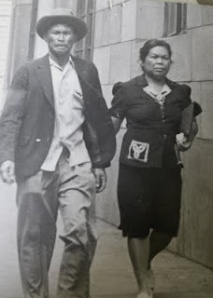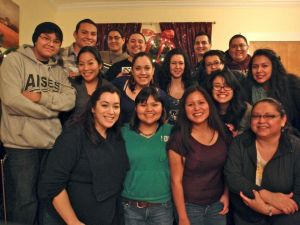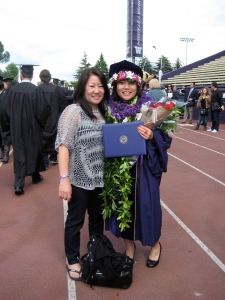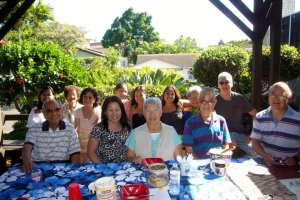This month’s Diversity in Science Carnival is dedicated to Asian-Pacific Heritage Month. We’ll talk about strong Asian-Pacific women, Asian-Americans in education, and at the end there is an entire section dedicated to educators who would like to incorporate more information about Asian-Pacific Americans into their classroom.
For demographic facts on the Asian-Pacific Islander population, see the US Census Bureau’s Press Release on Asian-Pacific Heritage Month. Some highlights of the report are that there are 17 million Asians living in the United States; 5.6% of the population. Asians excel in educational attainment; 50% of adults aged 25 and over possess a college degree. This is compared to only 25% of the overall American population over age 25. Hawaiians and Pacific Islanders account for 0.4% of the population, number 1.2 million people.
A recent report by the Economic Policy Institute found that despite their higher levels of educational attainment, Asian Americans continued to suffer long-term unemployment in 2011. They concluded that the patterns of unemployment were a result of nativity (a high number of foreign-born Asians), racial bias, and the high number of Asians that reside in California, a state which has struggled in the economic crisis. It is unknown if these same unemployment rates are also within STEM fields, which seemingly have no shortage of jobs. Within STEM fields, 6% of undergraduate (2008) and graduate (2009) students are of Asian-Pacific Islander descent.
The Asian-Pacific Islander population contribute to the rich cultural diversity of the United States. The Pacific Island National Park blog featured photos and videos from Pacific Islander Heritage Day on May 11, 2012 at Pu’ukohola Heiau National Historic Site in Hawaii. Participants in this event had the opportunity to experience traditional demonstrations and activities related to Native Hawaiian culture and the cultures of other areas of the Pacific.
Professionally, the Society of Asian Scientists and Engineers (SASE) exists to advance Asian heritage scientists and engineers in education and employment. Andrea Stith blogged about the first annual meeting of SASE which occurred on the weekend of September 30, 2011. The second annual meeting will occur from October 11-13th, 2012 in Baltimore, Maryland. If you’re interested in following SASE, they have their own blog as well.
Asian-Pacific Women
At the UW SACNAS Chapter Blog, Dr. Amber Caracol talks about her lineage of strong women, stemming back to her family history in Korea and the Philippines.
Amber, who is the former president of the UW SACNAS Chapter and now teaches Anatomy and Physiology and Biology at North Seattle Community College, decided to host her students as guest bloggers on her personal site. She talks about Celebrating Diversity in her course, Biology 100 and how her class honored Asian-Pacific Heritage Month through blogging. The posts are about a variety of topics from teaching children about science, what diversity means to Tomoko Okada and how she has developed more confidence in her identity as a result, one person’s story of personal growth after attending a non-Christian school for the first time in their life, Raphael Davis’ experiences traveling in Asia in the Navy and his experiences living on the diverse ship, the USS Kitty Hawk, the science behind the life of Jonathon Franz, who works as a firefighter and paramedic in Tacoma and traveled to Haiti in 2011, and Rebecca Y’s experience working with Earth Corps. While not all of these posts are directly related to Asian-Pacific Heritage month, they highlight the diverse experiences of Asian-Pacific (and non-Asian-Pacific) scientists at the community college level.
A post by an Indian field biologist who discusses her experiences balancing work and home and comparing US and Indian graduate school and research traditions. If you are a mother doing field work, she provides great advice on how to take your child with you.
Continuing with the amazing female Asian-Pacific American scientist theme, Hyphen Magazine, which is dedicated to Asian American culture, featured Jane Luu for women’s history month. Dr. Luu is a Vietnamese-American astronomer who co-discovered the Kuiper Belt while still in graduate school!
The STEMinist blog recently featured Materials & Process Engineer Michelle Hsia, who got to work on a Forumla SAE race car as an undergraduate. The blog itself was founded by Ann Hoang, an Asian-American Software Engineer at the University of Oregon.
Looking for a way to inspire more girls to get involved in math and science? Three engineering students think they have a way to do this by exposing young girls to STEM using toys. Their project was featured as a Kickstarter of the Week and you can help them bring this to fruition.
Asian-Americans in Education
As mentioned earlier, data support the notion that Asian-Americans are successful in academia. Some attribute Asian-American success to the cultural values passed from parents on to their children. On the other hand, the high levels of success lead to stereotypes of Asian-Americans being the “model minority” or the assumption that all Asian-Americans and Pacific Islanders are monolithically successful.
The National Commission on Asian American and Pacific Islander Research in Education (CARE) at New York University conducts research on this very topic. A book specific to Asian-Americans in education is Asians in the Ivory Tower: Dilemmas of Racial Inequality in American Higher Education by Robert T. Teranishi. One review of the book noted that Teranishi addressed issues in data collection and data quality when examining the Asian-Pacific Islander American community and another addresses the Asian American male experience in higher education.
There are several notable college presidents who are Asian-American or Pacific Islander. To name a few:
Jim Yong Kim, M.D., Ph.D. (Anthropology)
President, Dartmouth College
http://www.dartmouth.edu/~president/bio/
next president of the World Bank
Mark Mitsui (Educational Leadership and Policy)
President, North Seattle Community College
https://people.northseattle.edu/users/mmitsui
Bob H. Suzuki, Ph.D. (Aerospace Engineering)
President Emeritus of California State Polytechnic University, Pomona
http://www.csupomona.edu/~ahimsacenter/ahimsa_advisory.shtml#suzuki
Leslie E. Wong, Ph.D. (Educational Psychology)
President, Northern Michigan University
http://web.archive.org/web/20100527092544/http://www.nmu.edu/president/bio.htm
now President, San Francisco State University
http://www.sfsu.edu/~news/2012/spring/71.html
Henry T. Yang, Ph.D. (Mechanical Engineering)
Chancellor, University of California, Santa Barbara
https://chancellor.ucsb.edu/about/
Phyllis Wise, Ph.D. (Biology)
Chancellor, University of Illinois at Urbana-Champaign
http://oc.illinois.edu/bio.html
For Educators
For educators interested in teaching students about Asian-Pacific American scientists, you can track the contributions of Asian-Pacific American scientists using this timeline that goes back to 1901! Also, there is a book that profiles Asian-American scientists for grades 6 and up. If you’d like to teach your students about the most brilliant Asian Americans of all time, this website has you covered! You can also teach about Asian American innovators
Speaking of younger students, the Angry Asian Man Blog highlighted two remarkable high school scientists: Angela Zhang, who won a $100,000 scholarship for her innovative cancer research and Li Boynton, who was invited to sit in with Michelle Obama during the President’s State of the Union Address.
Just for fun, why not teach your students about the science behind the wok? Or how about an entertaining discussion on Asian earwax?
For college students and those who are of drinking age, you can discuss the biology behind the “Asian Flush”, which may be caused by rice. Amasian offers both the most specific and the most entertaining scientific approach to the “Asian Glow” (or the “Asian Flush”) resulting from the buildup of acetaldehyde. He also discusses the emasculation of Asian American men in popular culture and provides the perfect mix of humor and science to illustrate his points.

Amasian provides a scientific approach to the “Asian Glow” and also uses humor to illustrate his findings
Why not teach about all of the Asian-Americans who won a Nobel Prize? You could start by focusing on Steven Chu, a quantum mechanic who won the Nobel Prize in Physics in 1997.
Here is a list of several other notable Asian-Pacific researchers and their fields:
Nobel Prize Winners in Physics
Subrahmanyan Chandrasekhar
Steven Chu
Chen Ning Yang
Tsung Dao Lee
Samuel Chao Chung Ting
Nuclear physicist (experiments proved Lee/Yang theory)
Chien-shiung Wu
Nobel laureates in medicine
Har Gobind Khorana
Susumu Tonegawa
AIDS researchers
Flossie Wong-Staal
David Da-i Ho
Information Specialist in Computer Security
Tsutomo Shimomura
Expert on Superconductivity Technology
Paul Ching-wu Chu
Sickle-Cell Disease Researcher
Constance Tom Noguchi
Stay Tuned and Keep Blogging!
Thanks for reading. Special thanks to Dr. Danielle Lee of The Urban Scientist and Dr. Alberto Roca of MinorityPostdoc.org for contributing materials to this month’s edition. The next Diversity in Science Carnival in June will honor Pride Month. Stay tuned for the next host…
Sabrina Bonaparte is a PhD student in Sociology at the University of Washington (for one more week!) She is the manager of the UW SACNAS Student Chapter blog.












